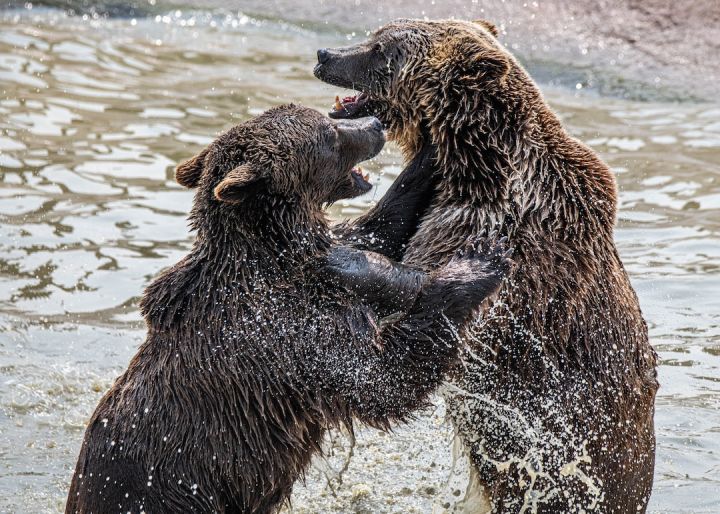What Are the Early Signs of Bear Awakening in Spring?
As winter finally begins to loosen its icy grip, nature slowly awakens from its deep slumber. One of the most iconic signs of spring is the awakening of bears from their long hibernation. These majestic creatures have captivated human imagination for centuries, and observing their early signs of awakening is a thrilling experience for nature enthusiasts. In this article, we will explore the early signs of bear awakening in spring, providing insight into their behavior and offering tips for those who wish to witness this incredible sight.
Emergence from the Den
After months of hibernation, bears gradually emerge from their dens as the days grow longer and temperatures rise. This emergence is a sure sign that spring has arrived. During this time, bears may appear groggy and disoriented as they adjust to their surroundings. They may spend some time just outside their dens, stretching and yawning, before venturing further into their territory.
Increased Activity
As bears fully awaken from their deep slumber, their activity levels begin to increase. They start exploring their habitat in search of food and water, which may be scarce in the early days of spring. Bears are known to be opportunistic feeders and will consume a variety of food sources, including berries, grasses, insects, and even small mammals. Increased activity during this time also includes marking their territory and mating rituals.
Rumbling Stomachs
During hibernation, bears rely on stored fat reserves to sustain them. As spring arrives and food becomes more readily available, bears experience an intense hunger. Their rumbling stomachs can be heard from a distance, signaling their need to replenish their energy stores. This is a crucial time for bears to find nutritious and easily accessible food sources to regain their strength after months of dormancy.
Social Interactions
Spring marks the time for social interactions among bears, particularly for mating purposes. Male bears will actively seek out female bears in their territory, engaging in courtship rituals and displays of dominance. These interactions can be quite intense and may involve vocalizations, posturing, and even physical confrontations. Witnessing these displays of power and courtship can be both awe-inspiring and a reminder of the raw beauty of nature.
Tips for Observing Bear Awakening
If you are eager to witness the early signs of bear awakening in spring, there are a few precautions to keep in mind. First and foremost, it is essential to prioritize safety. Bears are wild animals and should be observed from a safe distance. Binoculars or a camera with a zoom lens can help capture their behavior without intruding on their space.
Another tip is to be patient and persistent. Bears may not immediately show themselves, especially if they are still in the process of awakening. Choose locations known for bear activity and spend time quietly observing their habitat. Early morning or late evening hours are typically the best times to spot bears as they are more active during these periods.
Lastly, it is crucial to respect the bears’ natural habitat and not disturb them. Avoid leaving food or garbage behind, as this can attract bears and disrupt their natural behavior. Remember that we are merely visitors in their world, and it is our responsibility to minimize our impact on their environment.
In conclusion, the early signs of bear awakening in spring are a reminder of the beautiful cycle of nature. From emerging from their dens to increased activity and social interactions, witnessing these signs is a testament to the resilience and adaptability of these magnificent creatures. By respecting their habitat and observing from a safe distance, we can appreciate the wonders of bear awakening while ensuring their continued well-being.






